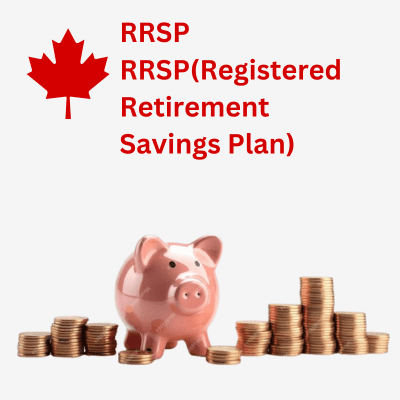RRSP

Jaspreet Kaur Insurance Advisor
RRSP (Registered Retirement Savings Plan)
If you are looking for a best plans for retirement then a Registered Retirement Savings Plan (RRSP) is a tax-advantaged savings plan in Canada designed to help individuals save for their retirement. A Registered Retirement Savings Plan contributions are tax-deductible, and the investment income earned within the plan grows tax-deferred until withdrawal. Here are key features of an Registered Retirement Savings Plan:
1. Tax Advantages:
Tax Deductible Contributions: Contributions to an Registered Retirement Savings Plan are tax-deductible, meaning they can be used to reduce taxable income.
Tax-Deferred Growth: The investment income within the Registered Retirement Savings Plan grows tax-deferred until funds are withdrawn.
2. Contribution Limits:
Contribution Room: Contribution room is based on a percentage of earned income, up to a maximum limit set by the Canada Revenue Agency (CRA).
Carry Forward: Unused contribution room can be carried forward to future years.
3. Types of Investments:
Various Investment Options: Registered Retirement Savings Plan offer a range of investment options, including mutual funds, stocks, bonds, and other eligible securities.
4. Spousal RRSPs:
Income Splitting: Spousal Registered Retirement Savings Plan allow for income splitting in retirement, which can be beneficial for tax planning purposes.
5. Home Buyers’ Plan (HBP):
First-Time Home Buyers: The HBP allows first-time homebuyers to withdraw up to a certain amount from their Registered Retirement Savings Plan for a down payment on a home without incurring taxes. The amount must be repaid over a specified period.
6. Lifelong Benefits:
No Age Limit for Contributions: Unlike some other retirement savings vehicles, there is no age limit for contributing to an Registered Retirement Savings Plan.
No Maximum Age for Withdrawals: While contributions must stop at a certain age, there is no maximum age for making withdrawals.
7. Tax Treatment of Withdrawals:
Taxable Withdrawals: Withdrawals from an RRSP are considered taxable income and are subject to withholding taxes.
Tax Planning in Retirement: Individuals often withdraw from their Registered Retirement Savings Plan in retirement when they may be in a lower tax bracket.
8. Deadline for Contributions:
Contribution Deadline: RRSP contributions made in a specific tax year can be claimed for that tax year or carried forward. The contribution deadline is usually 60 days into the following calendar year.

9. Estate Planning:
Transfer to Beneficiary: RRSP assets can be transferred to a surviving spouse or common-law partner on a tax-deferred basis upon death.
RRSP contribution limit
As per information from the Canada Revenue Agency, in 2024, the maximum amount you can contribute to your Registered Retirement Savings Plan is $31,560.
Putting money into your RRSP is a smart way to prepare for the future. When you contribute to it, you can lower the amount of income tax you have to pay because you get a tax deduction. Plus, any money you make from your investments in the Registered Retirement Savings Plan isn’t taxed until you take it out. This can help you grow a bigger retirement fund. We’ll help you understand the rules for making contributions so you can make the most out of your plan.
RRSP deadline for 2024
The RRSP deadline for 2024 contributions is a vital date for investors aiming to enhance their financial planning for the 2023 tax year. For the 2024 tax year, the deadline is set for February 29, 2024. Avail the best RRSP rates in Canada today.
Contact us today to schedule a consultation and take the first step toward securing a brighter financial future. We deal in best plans for retirement in canada.
[Jaspreet Kaur – Insurance Advisor]



